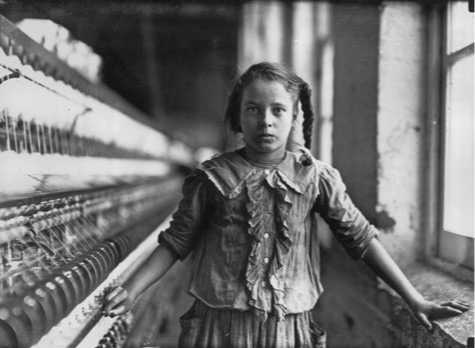Women continued to supply a significant part of the industrial working force. But now many more of them were working outside their homes; the factory had almost completely replaced the household as the seat of manufacturing.23 Such women had no choice but to leave the “domestic sphere” to make a living. Textile mills and “the sewing trades” absorbed a large percentage of women, but in all fields women were paid substantially lower wages than men.
Women found many new types of work in these years, a fact commented on by The New York Times as early as 1869. They made up the overwhelming majority of salespersons and cashiers in the big new department stores. Store managers considered women more polite, easier to control, and more honest than male workers, all qualities especially valuable in the huge emporiums. Over half of the more than 1,700 employees in A. T. Stewart’s New York store were women.
Educated, middle-class women also dominated the new profession ofnursing that developed alongside the expanding medical profession and the establishment of large urban hospitals. To nearly all doctors, to most men, and indeed to many women of that day, nursing seemed the perfect female profession since it required the same characteristics that women were thought to

This girl ran four spinning machines in a cotton mill in Whitnel, North Carolina. Only four feet, three inches tall, she earned forty-eight cents a day. Photographer Lewis Hine hoped that pictures such as this one (1908) would generate public support for child labor laws.
Have by nature: selflessness, cleanliness, kindliness, tact, sensitivity, and submissiveness to male control. Typical was this remark of a contemporary authority: “Since God could not care for all the sick, he made women to nurse.” Why it had not occurred to God to make more women physicians, or for that matter members ofother prestigious professions like law and the clergy, this man did not explain, probably because it had not occurred to him either.
Middle-class women did replace men as teachers in most of the nation’s grade schools, and they also replaced men as clerks and secretaries and operators of the new typewriters in government departments and in business offices. Most men with the knowledge of spelling and grammar that these positions required had better opportunities and were uninterested in office work, so women high school graduates, of whom there was an increasing number, filled the gap.
Both department store clerks and “typewriters” (as they were called) earned more money than unskilled factory workers, and working conditions were more pleasant. Opportunities for promotion for women, however, were rare; managerial posts in these fields remained almost exclusively in the hands ofmen.




 World History
World History









